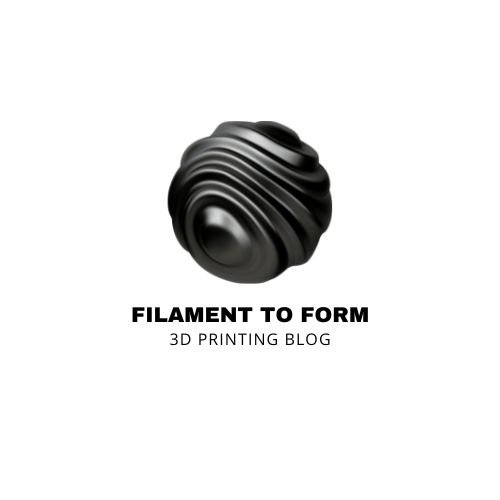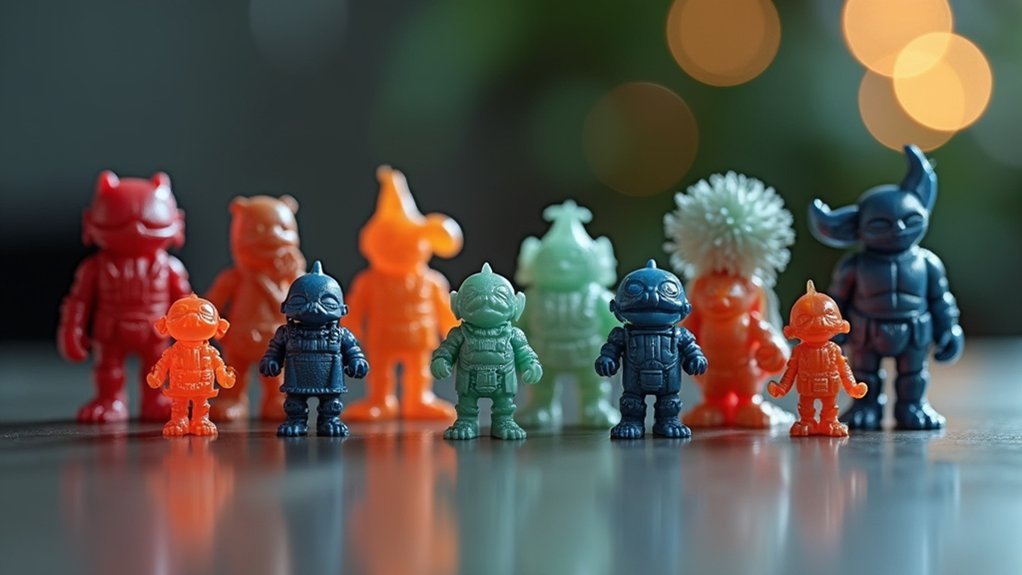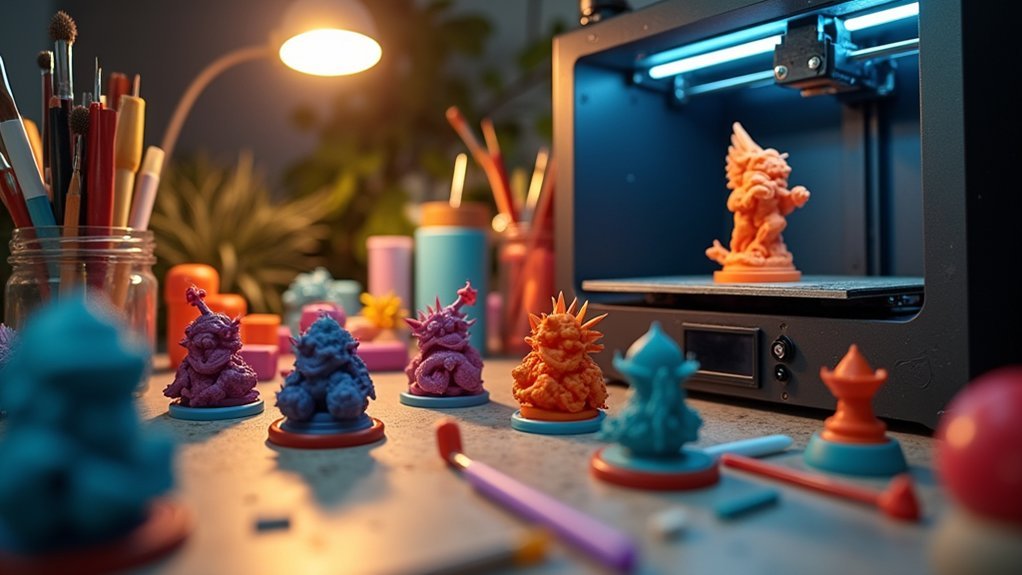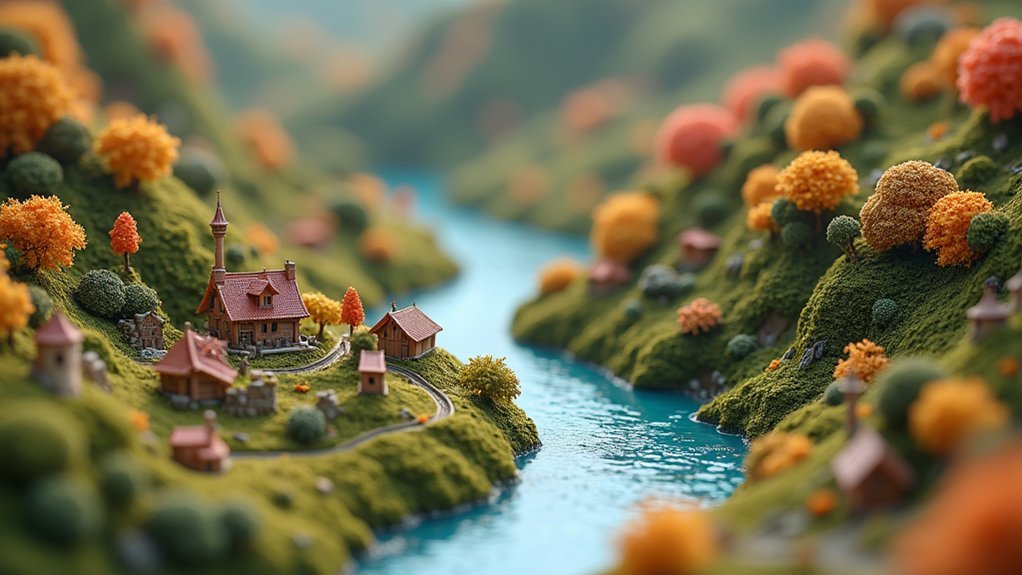You’re facing a critical decision that’ll determine whether your architectural models showcase professional-grade detail or fall short of client expectations. The right 3D printer can transform your design process, delivering the precision and reliability you need for complex structures and intricate details. However, with countless options flooding the market, choosing incorrectly could mean wasted time, money, and compromised project quality. The difference between success and frustration often comes down to understanding which features truly matter.
FLASHFORGE Adventurer 5M Pro 3D Printer with Auto Printing System
If you’re an architect seeking precision and speed for your model creation, the FLASHFORGE Adventurer 5M Pro delivers exceptional performance with its 600mm/s maximum travel speed and Core XY structure. You’ll appreciate the automatic bed leveling that removes manual adjustments, while multiple nozzle sizes (0.25mm to 0.8mm) let you balance detail with efficiency. The printer supports diverse materials including PLA, ABS, PETG, and carbon fiber composites, reaching 280°C for versatile architectural applications. You can monitor projects remotely through the Flash Maker app, and the dual-sided PEI platform guarantees easy model removal. Setup takes just 10 minutes from unboxing.
Best For: Architects, engineers, and professional designers who need high-speed, precision 3D printing with minimal setup time and remote monitoring capabilities for creating detailed models and prototypes.
Pros:
- Exceptional speed and precision with 600mm/s travel speed, Core XY structure, and automatic bed leveling for professional-quality results
- Versatile material compatibility including carbon fiber composites with 280°C heating capability for diverse project requirements
- User-friendly operation with 10-minute setup, mobile app control, and tool-less model removal for streamlined workflow
Cons:
- Higher price point compared to basic 3D printers may not suit hobbyists or budget-conscious users
- Limited build volume information provided, which could restrict larger architectural model projects
- Dependency on mobile app for remote features may be problematic for users preferring standalone operation
Creality K1C 3D Printer, 2024 New Version with AI Camera
The Creality K1C’s blazing 600mm/s print speed transforms architectural model production from a time-consuming bottleneck into a rapid prototyping powerhouse. You’ll appreciate the enclosed CoreXY design that maintains precision even at these extreme speeds, while the 300°C hotend handles carbon fiber-reinforced materials perfect for structural components.
The hands-free auto-calibration eliminates setup headaches, and the AI camera monitors your prints while creating time-lapse documentation of your architectural builds. You can operate in silent mode at ≤45dB for office environments, while activated carbon filtration keeps your workspace clean. The clog-free direct extruder and tri-metal nozzle guarantee consistent material flow for detailed architectural features.
Best For: Architects, engineers, and professionals who need rapid prototyping of detailed models using advanced materials like carbon fiber composites in office or studio environments.
Pros:
- Exceptional 600mm/s print speed with 20000mm/s² acceleration delivers results 12 times faster than standard 3D printers
- High-temperature 300°C hotend and tri-metal nozzle support advanced materials including carbon fiber-reinforced filaments for structural components
- Comprehensive smart features including AI camera monitoring, hands-free auto-calibration, silent ≤45dB operation, and air purification system
Cons:
- Mixed customer reviews indicate potential reliability issues and printer malfunctions after short usage periods
- Customer support quality appears inconsistent based on user feedback and experiences
- High-speed printing may require frequent adjustments and monitoring for filament jams and optimal performance settings
ELEGOO Mars 5 Ultra 9K Resin 3D Printer
ELEGOO’s Mars 5 Ultra 9K Resin 3D Printer delivers exceptional detail for architects who need precise scale models with intricate features. You’ll achieve stunning 18μm XY resolution on the 7-inch 9K mono LCD screen, perfect for capturing fine architectural details. The 150mm/h printing speed helps you meet tight project deadlines while maintaining quality.
You’ll appreciate the smart automatic leveling and AI camera that monitors prints in real-time, detecting errors before they ruin your models. The built-in sensors alert you to resin shortages and residue buildup. At 6.04 x 3.06 x 6.49 inches build volume, you can create detailed building sections and components with professional-grade precision that clients expect.
Best For: Architects, small business owners, and detail-oriented creators who need high-precision resin prints with professional-grade quality and smart monitoring features.
Pros:
- Exceptional 9K resolution (18μm XY) with fast 150mm/h printing speed for detailed models
- Smart automation features including automatic leveling, AI camera monitoring, and real-time error detection
- User-friendly design with intelligent sensors for resin shortage alerts and residue detection
Cons:
- Lid lacks hinges and must be completely removed for access during printing
- Rounded resin spout design can cause messy spills during pouring
- Built-in camera view becomes obstructed when printing larger models
Creality Ender 3 3D Printer with Resume Printing Function
Beginner architects and students will find the Creality Ender 3 perfectly suited for their first foray into 3D printing architectural models. You’ll appreciate its generous 8.66×8.66×9.84-inch build volume that accommodates most architectural prototypes. The resume printing function protects your projects from power outages, ensuring you won’t lose hours of work. You can assemble this open-source printer in approximately two hours. Its advanced extruder technology reduces clogging while V-shaped POM wheels provide quiet, smooth operation. The safety-protected power supply heats the bed to 100 degrees within five minutes. You’ll print exclusively via SD card or computer connection.
Best For: Beginner architects, students, and newcomers to 3D printing who need a reliable, open-source printer for learning and creating architectural models and prototypes.
Pros:
- Resume printing function prevents loss of work during power outages or interruptions
- Generous 8.66×8.66×9.84-inch build volume accommodates most architectural prototypes and models
- Advanced extruder technology with V-shaped POM wheels provides quiet, smooth operation while reducing clogging risk
Cons:
- Requires approximately 2 hours of assembly time before use
- Limited connectivity options with no phone connectivity, only SD card or computer printing
- Manual voltage checking required to ensure proper power supply operation at 115V
Anycubic 3D Printer Kobra S1 Combo, Multi-Color High Speed Printing
Architects seeking multi-color capability without sacrificing speed will find the Anycubic Kobra S1 Combo particularly compelling for creating detailed architectural models. You’ll achieve impressive speeds up to 600mm/s with 20,000 mm/s² acceleration, dramatically reducing project timelines. The 4-color printing capability expands to 8 colors when combining two units, perfect for distinguishing building materials, zones, or design phases in your models.
The dual PTC heating module with 360° hot air circulation guarantees ideal filament condition, preventing warping issues common in architectural prints. You’ll appreciate the magnetic printing surface for easy model removal and the Anycubic App’s remote control functionality for monitoring complex builds. While some users report assembly challenges, the enhanced printing precision through Anycubic Kobra OS delivers the accuracy architectural models demand.
Best For: Architects and designers who need high-speed multi-color 3D printing capabilities for creating detailed architectural models and prototypes with precise accuracy.
Pros:
- Exceptional speed with 600mm/s printing and 20,000 mm/s² acceleration for faster project completion
- Multi-color capability (4 colors standard, expandable to 8 colors) ideal for distinguishing materials and design elements
- Advanced filament conditioning with dual PTC heating and 360° circulation prevents warping common in architectural prints
Cons:
- Assembly can be challenging with reported issues like oversized holes and unresponsive components
- Users may experience a learning curve with the new slicer systems and software setup
- Some quality control issues reported including filament feeding problems and print adhesion difficulties
FLASHFORGE Adventurer 5M 3D Printer with Auto Leveling & High-Speed FDM
Speed-focused architects will find the FLASHFORGE Adventurer 5M delivers exceptional performance with its 600mm/s travel speed and 20,000mm/s² acceleration capabilities. You’ll appreciate the one-click automatic leveling that guarantees flawless first layers for your architectural models. The high-flow nozzle produces 32mm³/s output while heating to 200°C in just 35 seconds.
You can switch between nozzle diameters (0.25/0.4/0.6/0.8mm) to balance precision with efficiency. The dual-sided PEI platform makes model removal effortless, while dual-channel cooling fans enhance print quality. You’ll work with multiple materials including PLA, PETG, ABS, and ASA. Remote monitoring through the Flash Maker app lets you track progress anywhere.
Best For: Speed-focused architects, designers, and makers who need high-performance 3D printing with automated features and the ability to work with multiple filament types for rapid prototyping and detailed model creation.
Pros:
- Exceptional speed capabilities with 600mm/s travel speed and 20,000mm/s² acceleration for fast project completion
- One-click automatic leveling and dual-sided PEI platform eliminate setup hassles and ensure consistent first layers
- Versatile nozzle options (0.25-0.8mm) and multi-material compatibility (PLA, PETG, ABS, ASA) provide flexibility for various project requirements
Cons:
- At 22 pounds and 14.2 x 14.8 x 16.2 inches, the printer may be too large for smaller workspaces
- Mixed customer reviews (3.9/5 stars) suggest potential quality control or user experience issues
- Initial bed leveling process can take up to 20 minutes, which may slow down initial setup
FLASHFORGE Adventurer 5M 3D Printer with Auto Leveling & High-Speed Printing
The FLASHFORGE Adventurer 5M stands out as an ideal choice for architectural model makers who need rapid prototyping capabilities without sacrificing precision. You’ll appreciate its Core XY all-metal motion structure that delivers high-speed printing while maintaining exceptional quality and stable operation. The one-click auto-leveling system eliminates calibration headaches, letting you focus on your designs rather than technical adjustments.
You can swap between nozzle diameters (0.25-0.8mm) in just three seconds without tools, adapting quickly from fine detailed work to larger structural elements. The enclosed design reduces noise and dust while dual air filters manage fumes—perfect for office environments where you’re creating architectural prototypes.
Best For: Beginners and architectural model makers who need fast, user-friendly 3D printing with automatic features and quick setup, but who don’t require advanced software functionality or enterprise-level reliability.
Pros:
- One-click auto-leveling and tool-free nozzle changes in 3 seconds make operation extremely user-friendly for beginners
- Core XY all-metal motion structure delivers high-speed printing with stable, low-noise operation in an enclosed design
- Quick 15-minute setup and resume functionality after power outages provide reliable printing experience
Cons:
- Software issues including unreliable slicer functionality, poor remote monitoring, and beta-level firmware quality
- PETG adhesion challenges at higher temperatures and material compatibility limitations beyond basic PLA variants
- Inadequate technical support and software alternatives lack wireless printing capabilities
X-Maker Joy 3D Printer for Kids with 8 PLA Filament Set
Young architects and design students will find exceptional value in the X-Maker Joy 3D Printer, which combines beginner-friendly operation with professional-grade 0.05 mm precision accuracy. You’ll appreciate the smart app control across iOS, Android, and Windows platforms, plus voice commands that streamline your workflow. The built-in camera lets you monitor architectural model progress remotely and create time-lapse videos of your builds. With access to over 1,500 digital designs and weekly updates, you’ll have endless inspiration for architectural projects. The fully enclosed structure guarantees safety while the no-leveling-required setup gets you printing quickly. Print speeds reach 200 mm/s for efficient model production.
Best For: Young architects, design students, and kids who want to create architectural models and 3D projects with beginner-friendly operation and professional-grade precision.
Pros:
- High precision 0.05 mm accuracy with fast 200 mm/s printing speeds for quality architectural models
- Smart app control with voice commands and built-in camera for remote monitoring and time-lapse creation
- Complete kit with 8 PLA filaments, over 1,500 digital designs, and fully enclosed safety structure requiring no leveling
Cons:
- Some users experience connectivity and initial setup issues despite responsive customer service
- Print times require monitoring and careful design selection for optimal results
- Limited to beginner-level functionality which may restrict advanced users’ capabilities
Bambu Lab A1 Mini Combo 3D Printer with AMS Lite
Since architectural models demand both speed and precision, the Bambu Lab A1 Mini Combo with AMS Lite stands out as an ideal choice for professionals who can’t compromise on detail quality. You’ll achieve exceptional accuracy with 10,000 mm/s² acceleration, delivering fast prints without sacrificing precision. The AMS Lite enables vibrant multi-color printing, perfect for distinguishing different building elements in your architectural models.
You won’t need manual calibration thanks to full-auto calibration and active flow rate compensation that guarantees consistent results. The simplified touchscreen interface gets you printing within 20 minutes, while the 1-clip quick swap nozzle makes maintenance effortless. At ≤48 dB operation, you’ll maintain a quiet workspace environment.
Best For: Professionals and enthusiasts who need fast, precise 3D printing with multi-color capabilities for architectural models, prototypes, or detailed projects while maintaining a quiet workspace.
Pros:
- High-speed printing with 10,000 mm/s² acceleration while maintaining exceptional accuracy and detail quality
- Full automation features including auto-calibration and active flow rate compensation eliminate manual setup and ensure consistent results
- Multi-color printing capability with AMS Lite allows for vibrant, complex designs with easy material switching
Cons:
- Higher price point due to the included AMS Lite system compared to basic 3D printer models
- Limited build volume as a “Mini” printer may restrict larger project capabilities
- Dependency on proprietary systems and potentially higher ongoing costs for compatible materials and replacement parts
FLASHFORGE 3D Printer AD5M, CoreXY High-Speed Printer with Auto Leveling
Architectural professionals seeking lightning-fast prototyping capabilities will find the FLASHFORGE AD5M’s CoreXY system delivers exceptional speed at 600mm/s with 20,000mm/s² acceleration. You’ll appreciate the 1-click auto leveling with pressure sensor guaranteeing ideal first layers for detailed architectural components. The 220×220×200mm build volume accommodates most architectural scale models, while the high-temp extruder reaching 280°C supports various materials including PETG for durability.
Quick-swap nozzles from 0.25–0.8mm let you switch between fine details and faster infill printing. The dual-channel cooling system guarantees sharp overhangs and intricate features maintain dimensional accuracy. You can monitor progress remotely through the Flash Maker app, though some users prefer third-party slicers for advanced control over architectural printing parameters.
Best For: Architectural professionals, engineers, and advanced makers who need high-speed prototyping with precision detail work and require the flexibility to switch between fine and coarse printing for complex scale models.
Pros:
- Exceptional speed at 600mm/s with 20,000mm/s² acceleration and CoreXY system for rapid prototyping
- Quick-swap nozzles (0.25-0.8mm) and high-temp extruder (280°C) provide versatility for different materials and detail levels
- 1-click auto leveling with pressure sensor ensures consistent first layers and dimensional accuracy for architectural components
Cons:
- FlashPrint software receives mixed reviews with some users preferring third-party slicers for advanced control
- Requires .gx file format which may need adjustments when using third-party slicing software
- Integrated storage limited to 500g spools requiring re-spooling of larger filament spools
Factors to Consider When Choosing the Most Suitable 3D Printers for Architectural Models
When you’re selecting a 3D printer for architectural models, you’ll need to assess several critical specifications that directly impact your project’s success. Your printer’s build volume must accommodate your largest planned models, while layer resolution determines how precisely fine details like windows, textures, and structural elements will appear. You’ll also want to contemplate material compatibility options, build plate adhesion reliability, and the printer’s ability to maintain structural detail accuracy throughout complex geometries.
Print Volume Requirements
Before you invest in a 3D printer for architectural modeling, you’ll need to carefully assess the print volume requirements that align with your project scale and complexity. You should look for printers with build dimensions of at least 220mm x 220mm x 200mm to accommodate most architectural models effectively. Larger projects will demand even greater capacity to avoid the need for splitting designs into multiple pieces.
When evaluating printer specifications, don’t overlook maximum travel speed capabilities. High-performance models offering speeds around 600mm/s will greatly improve efficiency when producing larger architectural pieces. This becomes essential when you’re working under tight deadlines or managing multiple projects simultaneously. Consider how your typical model dimensions match the printer’s build volume to guarantee you won’t face limitations that could compromise your design integrity or require time-consuming assembly of printed segments.
Layer Resolution Precision
While build volume determines what size models you can print, layer resolution precision dictates the quality and detail level your architectural models will achieve. You’ll want a printer offering 18μm resolution or better to capture intricate architectural features for professional presentations and visualizations.
Your nozzle choice greatly impacts resolution capabilities. Smaller 0.25mm nozzles excel at fine details, while larger 0.8mm nozzles sacrifice detail for faster printing speeds. Layer height selection between 0.1mm and 0.4mm directly affects surface smoothness—smaller heights deliver finer details essential for architectural modeling.
Don’t overlook your printer’s structural stability. Vibrations during printing create inaccuracies that’ll compromise your model’s quality. A stable frame guarantees consistent layer deposition, maintaining the precision your architectural models demand for accurate representation of design elements.
Material Compatibility Options
Since architectural models require diverse material properties to accurately represent different building components, your printer’s material compatibility becomes a critical selection factor. You’ll want a printer supporting versatile materials like PLA, ABS, PETG, and TPU to meet varying design needs and structural requirements. High-temperature materials such as ASA and nylon offer advantages for creating durable, weather-resistant components.
Look for printers with direct extruders that handle composite materials, including carbon fiber-infused filaments, which enhance strength and rigidity. Make certain your printer accommodates various nozzle sizes—0.25mm for intricate details, 0.4mm for standard work, and 0.8mm for faster printing. Assess compatibility with specialty materials like flexible filaments or high-resolution resins, which are essential for producing detailed architectural features that accurately represent complex building elements.
Build Plate Adhesion
Three fundamental adhesion factors will determine your architectural model’s printing success: build plate material, temperature control, and surface preparation. You’ll need to select the right build plate material for your filament type—PEI offers excellent grip for most materials, while glass provides smooth finishes ideal for detailed architectural features.
Your heated bed settings matter considerably when printing with ABS or PETG, as consistent temperature prevents warping that can ruin intricate model details. You can enhance adhesion further by applying glue sticks or specialized sprays to create stronger bonds.
Don’t overlook your slicer’s first layer settings. You’ll achieve better results by using a slightly thicker initial layer height, ensuring your architectural model’s foundation adheres properly throughout the entire printing process.
Structural Detail Accuracy
Precision defines the difference between a rough approximation and a professionally detailed architectural model. You’ll want to prioritize printers with high resolution capabilities, typically measured in microns—look for models offering 18μm precision for intricate details. Your nozzle choice matters greatly; smaller 0.25mm nozzles deliver finer detail but require patience, while 0.8mm nozzles speed up printing at detail’s expense.
Consider Core XY structures for enhanced stability during high-speed movements, ensuring your detailed features don’t suffer from vibration-induced inaccuracies. Automatic bed leveling is essential—it guarantees consistent first layers that make or break complex architectural designs.
Finally, evaluate your material options carefully. Resin printers typically achieve superior detail accuracy compared to filament-based alternatives, making them ideal for capturing intricate architectural features like window frames and decorative elements.
Print Speed Efficiency
When deadlines loom over architectural projects, print speed efficiency becomes your critical advantage in delivering models on schedule. High-speed printers achieve maximum travel speeds up to 600mm/s with accelerations of 20,000mm/s², dramatically reducing turnaround times. You’ll need to balance nozzle size selection between 0.25mm and 0.8mm, choosing larger nozzles for faster speeds when detail requirements allow.
Automatic bed leveling systems eliminate manual adjustments, saving valuable setup time. Advanced cooling systems enable faster layer cooling without quality compromises, which proves essential for large architectural models. Smart features like remote monitoring and filament detection streamline operations, ensuring continuous printing and minimizing downtime during lengthy projects. These efficiency factors directly impact your ability to meet tight deadlines.
Post-Processing Considerations
Several essential post-processing factors will determine your 3D printer selection and directly affect the final quality of your architectural models. You’ll need to take into account material compatibility since PLA is easier to sand and paint than rigid filaments like ABS or PETG. Choose printers that deliver high-resolution outputs to minimize extensive post-processing work on intricate details. Support structure removal becomes vital for complex designs, requiring additional smoothing and filling to achieve seamless integration. You’ll often need adhesion techniques like glue or chemical bonds to assemble multiple components into cohesive models. Factor in time for sanding, painting, and applying finishes to enhance surface quality and achieve your desired aesthetic results before making your printer selection.
Budget and Maintenance
Budget considerations will greatly impact your 3D printer choice, as entry-level models start around a few hundred dollars while professional-grade machines can exceed several thousand. Beyond initial costs, you’ll need to factor in ongoing maintenance expenses including replacement nozzles, build plates, and consumables like filament or resin.
Evaluate each printer’s reliability and available support options carefully. Frequent breakdowns lead to unexpected costs and project delays that can derail your workflow. Look for user-friendly features such as automatic bed leveling and easy nozzle swaps, which reduce maintenance time and associated costs.
Don’t overlook warranty coverage and customer support quality. Manufacturers offering robust support services help minimize long-term maintenance expenses while enhancing your overall experience with architectural model printing.
Frequently Asked Questions
What File Formats Are Compatible With Architectural Modeling Software for 3D Printing?
You’ll find STL, OBJ, and PLY files work universally with most 3D printers. Your architectural software likely exports these formats directly. AMF and 3MF offer better color and material support if you’re using advanced printers.
How Do I Calculate Material Costs for Large Architectural Model Projects?
You’ll multiply your model’s volume by material density and cost per gram. Factor in support material, infill percentage, and print failures. Most slicing software calculates material usage automatically once you’ve input your settings.
What Safety Precautions Should I Take When 3D Printing Architectural Models Indoors?
You’ll need proper ventilation to remove fumes, wear protective gear when handling resins, keep your workspace clean, maintain safe temperatures, and guarantee fire safety measures are in place for electrical equipment.
How Long Does It Typically Take to Print a Detailed Architectural Model?
You’ll typically need 8-24 hours for detailed architectural models, depending on size and complexity. Small buildings take several hours, while large, intricate structures can require multiple days of continuous printing time.
Can I Use Recycled or Eco-Friendly Filaments for Architectural Model Printing?
You can definitely use recycled and eco-friendly filaments like PLA, recycled PETG, and wood-filled materials for architectural models. They’ll provide good detail while reducing your environmental impact without compromising quality.





Leave a Reply